Peregrine Falcon
Falco peregrinus
-
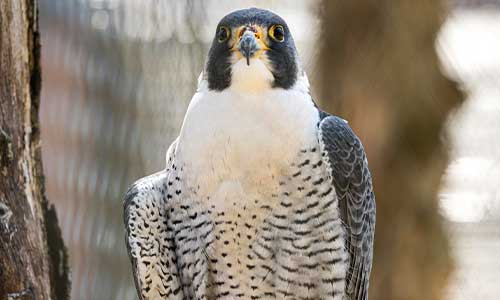
-
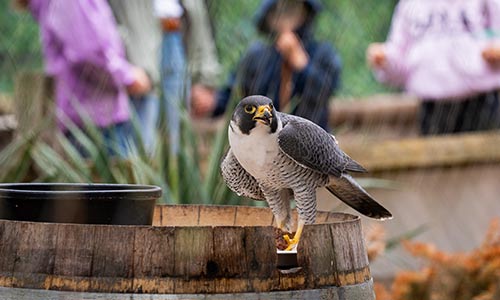
-
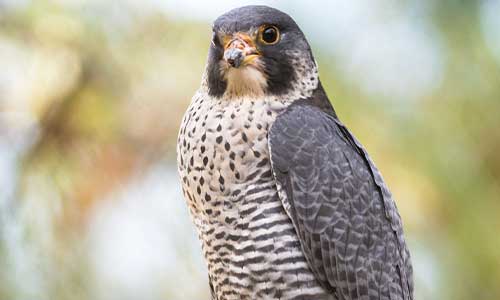
-
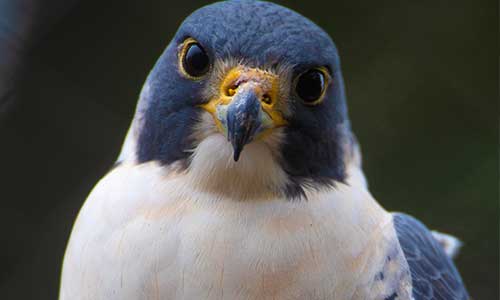
-
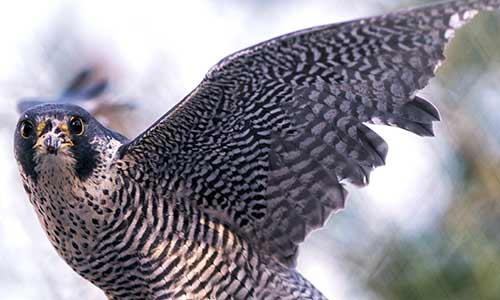
-
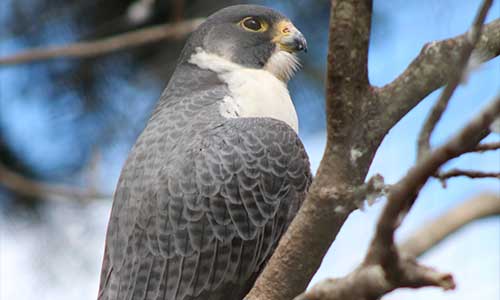
-
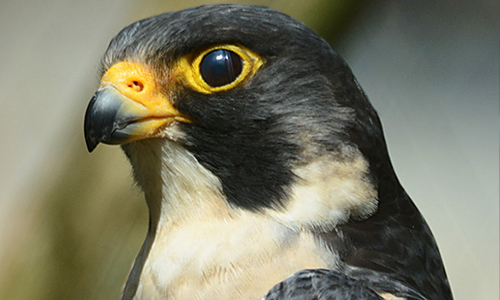 Peregrine Falcon
Peregrine Falcon
About the Peregrine Falcon

Class: Aves
Order: Falconiformes
Family: Falconidae
Genus: Falco
Species: peregrinus
Peregrine falcons have streamlined, "torpedo-shaped" bodies that help them dive at speeds over 200 miles per hour. Powerful beaks, talons and eyesight allow them to spot and capture prey with great precision. These falcons nest on cliffs and have even been known to nest on the sides of city buildings.
Peregrine Falcon Facts
Appearance:
Peregrine falcons have streamlined bodies with long, pointed wings. Females are larger than males, as seen in other birds of prey species. They have slate-colored, barred plumage and creamy white chests. Their sharp beak is pale blue and their feet are bright yellow. They have a distinctive black line under their eyes that helps them deflect sunlight. Falcons have streamlined, "torpedo-shaped" bodies that help them dive at speeds over 200 miles per hour. Their keen eyesight allows them to spot prey easily, and strong talons enable them to grab prey out of the air.
Size:
- Wingspan: Male, 38 inches; Female, 44 inches
- Weight: Male, 1 - 1.5 pounds; Female, 1.5 - 2 pounds
Diet:
Peregrine falcons feed on a diet of small to medium-sized birds, particularly ducks and pigeons, in the wild.
Behavior:
Peregrine falcons are the fastest animals in the world. They've been clocked at over 200 miles per hour while diving to capture prey.
Reproduction:
Peregrine falcons form strong pair bonds. They stay paired indefinitely, though re-pairings do occur occasionally. They nest on cliffs and have been known to nest on the sides of city buildings. An average of three to four eggs are incubated by both parents for 28 days, and hatchlings fledge after 25-42 days.
Life Expectancy:
Females live up to 20 years, and male lifespan is unknown.
Habitat/Range:
Peregrine falcons are found on every continent except Antarctica. Generally, they inhabit open areas with high cliffs near water. Some falcons migrate to southern latitudes during the winter months, but most live year round within their home range.
You Can Find This Animal in the Treasures of the Sierra Madre
Fast as a Falcon
Peregrine falcons are the fastest animals in the world. They've been clocked at over 200 miles per hour while diving to capture prey!
You May Also Like
At Franklin Park Zoo:
At Stone Zoo:








